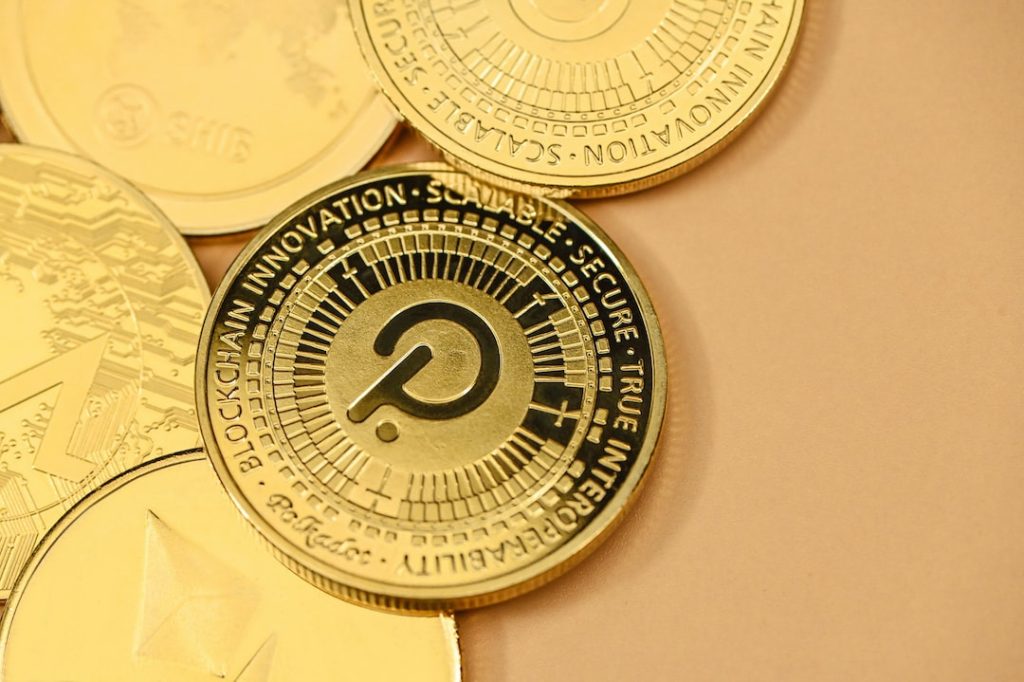Imagine a world where different digital ledgers can interact each other. That’s what Polkadot is all about. It’s a groundbreaking platform that’s changing how blockchains work together, making them more efficient and powerful.
What is Polkadot? – A Bridge Between Crypto Blockchains like Ethereum and Bitcoin
Polkadot is a blockchain network that designed to connect different blockchains and improve interoperability. It’s like a central station where various blockchain trains can meet and exchange passengers and cargo. This network allows for the transfer of data and transactions across previously isolated blockchain systems like Ethereum and Bitcoin.
A key feature of Polkadot parachains is their ability as specialized blockchains to run in parallel within the Polkadot blockchain ecosystem. Each parachain is designed for specific uses, yet they all benefit from the shared security and interconnectivity provided by Polkadot. This setup increases efficiency and collaboration.
Another is that Polkadot uses a Nominated Proof-of-Stake (NPoS) mechanism. Unlike the energy-intensive mining process in networks like Bitcoin, NPoS is a more energy-friendly method of maintaining network security and verifying transactions. It involves token holders supporting network validators, contributing to a more sustainable and cooperative network maintenance model.

Polkadot provides a design also focuses on easy upgrades and a community-driven governance structure. The network can adapt and evolve with minimal disruption, reflecting the changing needs and innovations. Its governance model gives DOT holders the ability to vote on network upgrades.
Polkadot started as an idea from Gavin Wood, one of the minds behind Ethereum and the former CTO of Ethereum Foundation. The development of Polkadot started in 2017 by him and his team at the Web3 Foundation.
Finally the project launched in May 2020, however its complete launch was in December 2021 with the release of five parachains.
How Does Polkadot Work?
Polkadot’s workings can be likened to a clever transport system, connecting different blockchain ‘islands’ to allow seamless interaction and data exchange.
Parachain and the Relay Chain
First, we have the parachains and the Relay Chain. Imagine parachains as different train lines, each serving a specific route but connected to a central hub – the Relay Chain. The parachains are specialized blockchains, each with their own unique functions and tasks. The Relay Chain is responsible for the network’s security and making sure that these parachains can communicate and interact with each other efficiently.
NPoS Consensus Mechanism
The Nominated Proof of Stake (NPoS) consensus mechanism has three main roles: Validators, Nominators, and Collators. These roles work together to keep the network running smoothly and securely.
- Validators: These are the key players in maintaining the Polkadot network. Validators are responsible for validating the information on parachains and adding new blocks to the Relay Chain. To become a Validator, a user must stake DOT tokens (Polkadot’s native cryptocurrency). The more tokens staked, the higher the chance of being selected as a Validator. However a Validator has its responsibilities. They must making sure that the transactions and information they validate are accurate. If a Validator acts maliciously or makes a mistake, they risk losing a portion of their staked tokens as a penalty.
- Nominators: Nominators are like the supporters or backers of Validators. They also stake DOT tokens, but instead of validating transactions themselves, they nominate one or more Validators whom they trust to do the job correctly. Nominators’ stakes contribute to the overall stake of their chosen Validators, increasing the Validators’ chances of being chosen to validate blocks. In return for their support, Nominators earn a share of the block rewards and transaction fees that their Validators receive. It’s a way for those who don’t want to be Validators themselves to still participate and earn rewards.
- Collators: Collators play a different role. They work on parachains and collect transactions and information from these parachains. Their job is to produce a summary of this information (called a ‘proof’) and provide it to the Validators on the Relay Chain. This proof helps Validators confirm that the parachain transactions are legitimate and accurate. While Collators don’t secure the network directly like Validators, they are essential for the smooth operation and communication between parachains and the Relay Chain.
Together, Validators, Nominators, and Collators form a system for maintaining the Polkadot network. This system also provides participation and collaboration among different stakeholders.
XCM (Cross-Chain Message Passing)
Finally, there’s XCM, or Cross-Chain Message Passing. Think of XCM as the communication lines between different train stations. It allows different chains to send messages and transactions to each other. This ability to ‘talk’ between chains is key, as it makes possible a variety of functions and interactions that were previously impossible in isolated blockchains. This feature is essential for decentralized applications (DApps) building on Polkadot.
DOT – The Native Token of Polkadot Network
DOT is the native token of the Polkadot protocol. It has several important jobs in the Polkadot network.
DOT is also for staking rewards, as dot holders stake their DOT to secure the network and earn rewards. Remember how we talked about Validators and Nominators in the network? They need to own and use DOT tokens to do their jobs. By staking DOT, these users help keep the network secure and running smoothly. It’s like putting a deposit down to show you’re serious about following the rules and doing a good job.

Photo by Traxer on Unsplash
These tokens are used for governance token too. This means that if you hold DOT tokens, you can vote in how Polkadot grows and changes. It’s like having a voting ticket. The more DOT you have, the more influence you can have in decisions like upgrading the system or fixing problems.
Finally, DOT tokens are employed as DOT as collateral when new DOT parachains bond tokens to join the network. It’s a way to make sure that parachains are committed and serious about being a part of Polkadot.
How to Buy Polkadot?
At the date of writing the amount of DOT in the circulating supply is about 1,252 million. Its actual price is $5.42. So, want to buy Polkadot (DOT)? Don’t worry; it’s easy, even for beginners. Here’s how you can do it:
- Find a Crypto Exchange: Look for a website (crypto exchange) where you can buy and sell crypto, like Coinbase, Binance, or Kraken.
- Make an Account: You need to create your own account there. They’ll ask for some basic information from you. For safety, they might also ask for an ID.
- Add Some Money: Deposit some money into your exchange account. Bank account or a card is a good option.
- Purchase DOT: On the exchange, find DOT and decide how much you want. You can buy it immediately at its current price or set a price you’re comfortable with and wait.
- Secure Your DOT: After you buy DOT, you should think about keeping it safe. You can use a ‘wallet’ for this. Wallets are apps or devices where you can store your crypto securely. Here’s our detailed guide for this topic.
- Keep an Eye on Prices: Remember, crypto prices can go up and down quickly. Try to stay updated about DOT prices and news.
Buying crypto has its risks, so be sure to only invest what you can afford to lose, and always be cautious and up to date.




